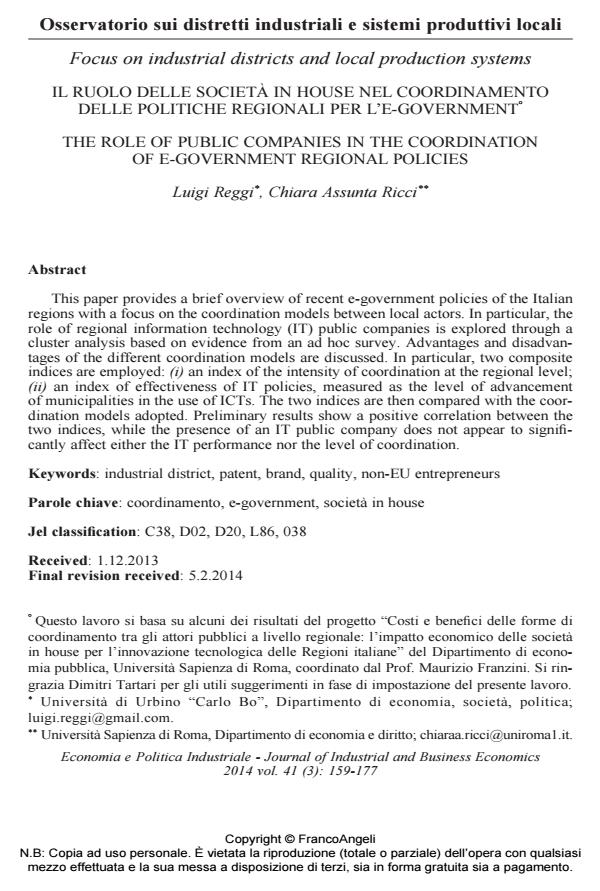Il ruolo delle società in house nel coordinamento delle politiche regionali per l’e-government
Titolo Rivista ECONOMIA E POLITICA INDUSTRIALE
Autori/Curatori Luigi Reggi, Chiara Assunta Ricci
Anno di pubblicazione 2014 Fascicolo 2014/3
Lingua Italiano Numero pagine 19 P. 159-177 Dimensione file 91 KB
DOI 10.3280/POLI2014-003007
Il DOI è il codice a barre della proprietà intellettuale: per saperne di più
clicca qui
Qui sotto puoi vedere in anteprima la prima pagina di questo articolo.
Se questo articolo ti interessa, lo puoi acquistare (e scaricare in formato pdf) seguendo le facili indicazioni per acquistare il download credit. Acquista Download Credits per scaricare questo Articolo in formato PDF

FrancoAngeli è membro della Publishers International Linking Association, Inc (PILA)associazione indipendente e non profit per facilitare (attraverso i servizi tecnologici implementati da CrossRef.org) l’accesso degli studiosi ai contenuti digitali nelle pubblicazioni professionali e scientifiche
This paper provides a brief overview of recent e-government policies of the Italian regions with a focus on the coordination models between local actors. In particular, the role of regional information technology (IT) public companies is explored through a cluster analysis based on evidence from an ad hoc survey. Advantages and disadvantages of the different coordination models are discussed. In particular, two composite indices are employed: (i) an index of the intensity of coordination at the regional level; (ii) an index of effectiveness of IT policies, measured as the level of advancement of municipalities in the use of ICTs. The two indices are then compared with the coordination models adopted. Preliminary results show a positive correlation between the two indices, while the presence of an IT public company does not appear to significantly affect either the IT performance nor the level of coordination.
Parole chiave:Coordinamento, e-government, società in house
Jel codes:C38, D02, D20, L86, 038
- Institutional logics and organizational change: the role of place and time Diego Ponte, Caterina Pesci, in Journal of Management and Governance /2022 pp.891
DOI: 10.1007/s10997-021-09578-6
Luigi Reggi, Chiara Assunta Ricci, Il ruolo delle società in house nel coordinamento delle politiche regionali per l’e-government in "ECONOMIA E POLITICA INDUSTRIALE " 3/2014, pp 159-177, DOI: 10.3280/POLI2014-003007